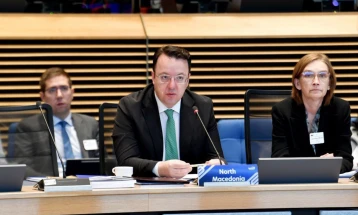EBRD: North Macedonia’s economy to grow 4% in 2021 and 2022

Skopje, 4 November 2021 (MIA) – In its latest report on the economic prospects of Western Balkan countries, the European Bank for Reconstruction and Development (EBRD) forecasts a 4% growth of the Macedonian economy in 2021 and 2022.
“A recovery is underway in North Macedonia, with growth driven by both domestic and external demand. Household consumption grew strongly, supported by increasing wages, credit growth and remittances (albeit still at relatively low levels compared with other regional economies). Exports of goods increased in both value and volume terms, in tandem with imports, driven by the recovery in the EU. The economy is forecast to grow by 4.0 per cent in both 2021 and 2022,” the report reads.
According to EBRD, a recovery is underway in North Macedonia following four consecutive quarters of negative growth between the second quarter of 2020 and the first quarter of 2021.
“GDP expanded by 13.1 per cent year-on-year in the second quarter of 2021, driven by both domestic and external demand. Household consumption grew strongly, supported by increasing wages, credit growth and remittances. Exports of goods increased in both value and volume terms driven by the recovery in the EU, North Macedonia’s main export market, and growing in tandem with imports. Foreign direct investment increased in the second half of 2021, surpassing the respective 2019 level,” reads the report.
However, it adds, this growth largely reflects reinvested earnings and debt instruments, and the share of new equity is very low.
“Consumer inflation increased on the back of temporary global factors, but remains under control at 3.6 per cent year-on-year in September. Monetary policy rates are at all-time lows, supporting the economic recovery. The economy is forecast to grow by 4.0 per cent in both 2021 and 2022. The main risks to the outlook relate to the speed of recovery in European markets and Covid-19 developments,” the report stresses.
EBRD has raised growth forecast for the Western Balkans economies to 6.4 per cent in 2021.
Moreover, inflationary pressures and external conditions may hinder future recovery. Industrial production and rising exports to the European Union (EU) are supporting growth in Bosnia and Herzegovina, North Macedonia and Serbia, while Albania, Kosovo and Montenegro are benefitting from a strong rebound in the hospitality sector over the summer months.
The recovery is also being driven by the expansion of household consumption, enabled by growing remittances, increases in nominal wages and credit growth in most of the region’s economies.
Similar to other EBRD regions, in the Western Balkans, consumer prices have been rising gradually since the beginning of 2021 on the back of higher food and energy prices. Fiscal policy has remained accommodative and monetary policy rates are at historical lows to support the economy. The likelihood of tightening is increasing, however, amid persistent growth in prices and inflationary trends in the eurozone.
“While the signs of economic recovery in the Western Balkans have been strong so far, significant uncertainties remain, in particular those connected to the future path of the pandemic and the potential worsening of external conditions,” EBRD notes.







